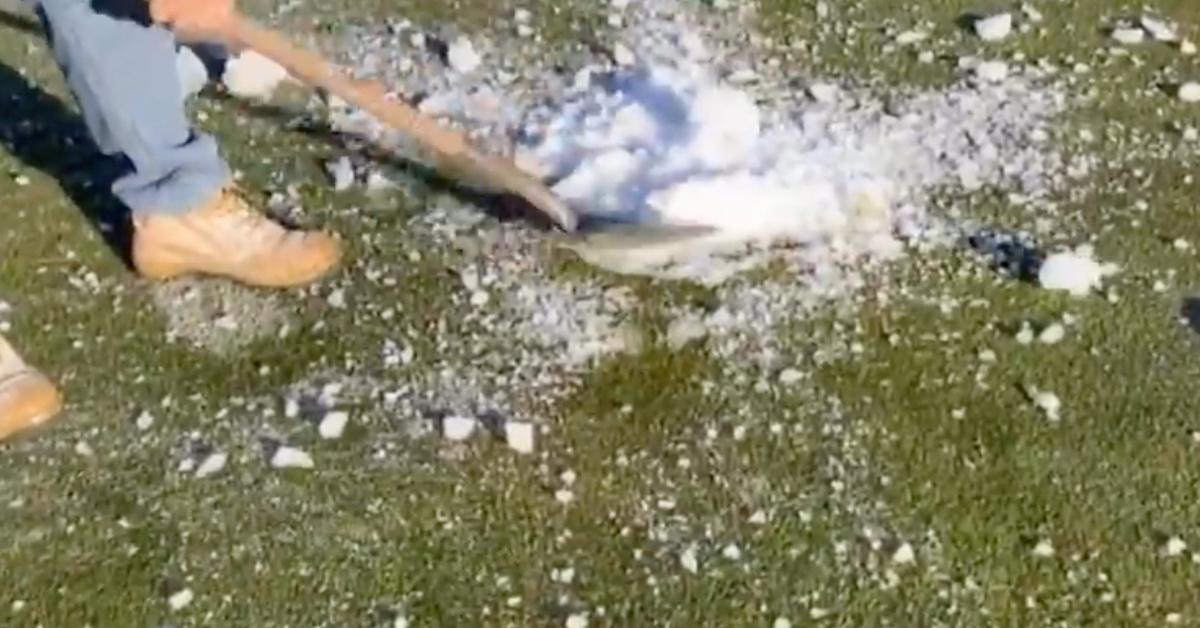"Exceedingly Rare" Ball of Ice: Megacryometeor Crashes to the Ground in Australia
Updated Aug. 16 2023, 4:55 p.m. ET
Imagine waking up to find chunks of ice littering your backyard with a serious hole in the earth. That's just what happened at a golf club in Australia, thanks to a strange phenomenon that sometimes happens in areas where airplanes have flown.
This phenomenon might sound like large hailstones, but the cause of megacryometeors is different. Should you be worried about balls of ice invading your area? Here's what happens when a megacryometeor ice ball falls from the sky.
What are megacryometeors? These balls of ice really fall from the sky.
According to United Press International (UPI), megacryometeors are ice balls that can fall from airplanes. Geoffrey Thomas, an aviation expert, told UPI that the de-icing technology used by commercial airplanes is used to help ice to melt before it has a chance to hit the ground, as it did in August 2023.
There isn't much research explaining the origins or causes of megacryometeors as of 2023. The Content Authority notes that megacryometeors are thought to form due to the "accumulation and freezing of moisture in the upper atmosphere." Other differences between megacryometeors and hailstones include:
- hailstones are smaller and more spherical
- hailstones are denser and have a higher water content
Heathrow Airport has researched megacryometeors to determine how and why they fall. According to Heathrow, about 25 incidents of ice fall are reported to the CAA annually (out of approximately 2.5 million flights in UK airspace). These large masses of ice falling are often attributed to aviation, but some incidents have been reported when no aircraft are nearby.
A potential megacryometeor from the sky and dented a golf course.
As UPI reported, the Belvoir Park Golf Club in Victoria, Australia was damaged by what was believed to be a megacryometeor. Dylan Knight, the superintendent of the golf club, received word early on Aug. 15, 2023, that large chunks of ice were found around the 5th hole green. Knight told reporters that the fallen ice made a hole about eight inches deep.
Knight spoke to Australian Broadcasting Corporation (ABC) about the incident, saying he eventually concluded the ice had likely fallen from an airplane. Half a dozen people had gathered around the ice, speculating about its origin, and at first, Knight believed the chilly morning temperatures had caused a sprinkler to freeze. The golf club planned to repair the dented greens over the next few days.
Thomas also spoke to ABC and explained that ice forms on planes, especially in icy conditions at 20,000 to 25,000 feet, and can fly into the fuselage or plummet to the earth. Cold enough temperatures can mean that ice remains frozen until it lands. "It is exceedingly rare for a piece of ice to actually hit anybody. In fact I've never heard of it. But that is not to say it hasn't happened."
That's a small relief for those of us remaining on solid ground.


